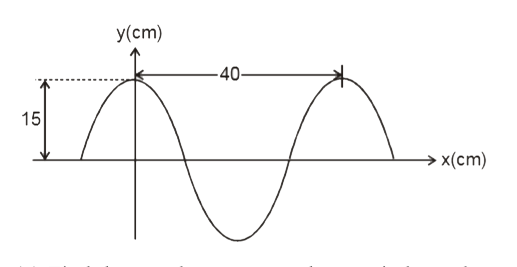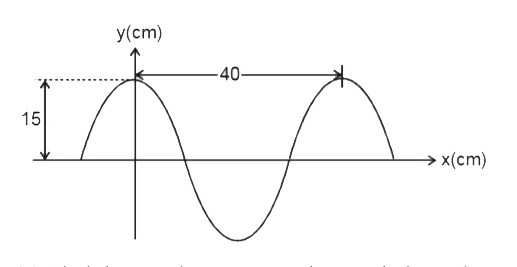A sinusoidal wave travelling in the same direction have amplitudes of 3 cm and 4 cm and difference in phase by . The resultant amplitude of the superimposed wave is
The correct Answer is:B
Step by step video, text & image solution for A sinusoidal wave travelling in the same direction have amplitudes of 3 cm and 4 cm and difference in phase by pi//2. The resultant amplitude of the superimposed wave is by Physics experts to help you in doubts & scoring excellent marks in Class 12 exams.
Topper's Solved these Questions
Similar Questions
Two plane monochromatic waves propagating in the same direction with amplitudes Aand2A and differing un phase by π/3 superimpose. Calculate the amplitude of the resulting wave.
View SolutionDetermine the amplitudes of the resultant motion when two sinusoidal waves of same frequency , travelling in the same direction are combined . Their amplitudes are 3.0cmand4.0cm and they differ in phase by π/2radians.
View Solution
Knowledge Check
- Question 1 - Select One
Two sine waves travel in the same direction in a medium. The amplitude of each wave is A and the phase difference between the two waves is 120^@. The resultant amplitude will be
AAB2AC4AD√2A - Question 2 - Select One
Two sound waves travel in the same direction in a medium. The amplitude of each wave is A and the phase difference between the two waves is 120∘. The resultant amplitude will be
A√2AB2AC3ADA - Question 3 - Select One
Three sinusoidal waves having same frequency have amplitudes in the ratio 6:3:2 and their phases are 0,π2,π . If 6a be the amplitude of the first wave , then which of the following is not correct
Athe amplitude of the resultant wave of the three waves is 5aBphase of resultant wave is tan−1(34)Cthe amplitude of resultant wave is 5a/6Dthe frequency of the resultant wave will be that of given wave
A sinusoidal wave travelling in the positive x direction has an amplitude of 15 cm, wavelength 40 cm and frequency 8 Hz. The vertical displacement of the medium at t =0 and x = 0 is also 15 cm, as shown

(b) Determine the phase constant ϕ, and write a general expression for the wave function.View SolutionA sinusoidal wave travelling in the positive x direction has an amplitude of 15 cm, wavelength 40 cm and frequency 8 Hz. The vertical displacement of the medium at t =0 and x = 0 is also 15 cm, as shown

(a) Find the angular wave number, period angular frquency and speed of the wave.View SolutionTwo waves of amplitudes 3mmand2mm reach a point in the same phase. What is the resultant amplitude ?
View SolutionTwo sinusoidal waves have the same angular frequeny the same amplitude ym, and travel in the same direction in the same medium. If they differ in phase by 50∘ the amplitude the resultant wave is given by
View SolutionTwo sound waves with amplitude 4cmand3cm interfere with a phase difference of
a. 0 b. π/3 c. π/2 d. π
Find the resultant amplitude in each case.View Solution
